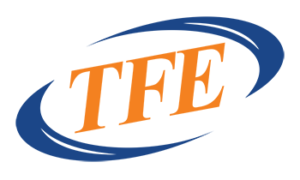What qualifies for E-rate funding?
The COVID-19 pandemic led many schools to digitize their learning processes through virtual classrooms. Online learning was only intended as a placeholder until schools eventually reopened after the pandemic. Still, this trend has now taken root in many of our schools. Analysts believe that the use of online tools in the classroom and virtual learning are here to stay. The most likely problem is that as schools integrate E-learning in their curriculums, tech, and connectivity demands are bound to rise.
Fortunately, the federal government helps K-12 schools adopt and run internet infrastructures through the E-rate funding program. E-rate aims to ensure that schools have high-speed broadband connections and robust information systems to support digital learning. Thanks to this initiative, 99 percent of school districts now have internet access at the FCC’s minimum bandwidth goal of 100 kbps per student.
Eligible schools can claim E-rate funding for up to a 90 percent discount on the purchase of qualifying connectivity devices and services. E-rate hardware and software get divided into two main groups—Category I and Category II. Here’s all you need to know about what qualifies for E-rate discounts in both categories:
Category I: Data Transmission and Internet Access
Category I includes services needed to enable broadband connectivity and data transmission in schools. These consist of services that provide conduit access to the internet, services that provide broadband connectivity, and data links connecting multiple access points or locations. Typical items in this category include:
- Ethernet
- Cable modem
- Digital Subscriber Line (DSL)
- Broadband over power lines
- Integrated Services Digital Network (ISDN)
- Self-provisioned broadband networks
- Leased dark and lit fiber
- Satellite
- Telephone dial-up
Category II: Internal Connections, Basic Maintenance of Internal Connections, and Managed Internal Broadband Services
Category II covers E-rate equipment and services needed to support broadband connectivity within a school. It is divided into three different sets:
Internal connections
Internal connections include all networking components necessary to power internal communications and distribute internet access. The list comprises of:
- Cables
- Caching
- Routers
- Switches
- Wireless controllers
- Antennas
- Racks
- Uninterruptible power supplies
The software applications powering these components are also eligible for E-rate discounts as long as they’re requested in the same category and purchased together with the associated hardware.
Basic maintenance for internal connections
Besides E-rate hardware and software purchases, the funding also supports the basic upkeep of eligible components to ensure continuous access to internet connections. Qualifying maintenance services include:
- Servicing, repair, and general care of eligible hardware
- Software upgrades and patching
- Reconfigurations
- Cable maintenance
- Technical support help-desk
Managed internal broadband services
E-rate offers discounts for services a third party provides to manage, operate, or monitor eligible internal broadband resources. These managed services may also involve installation, configuration, and on-site user training. E-rate also covers scenarios where the third party owns the equipment and leases it out to the school as part of the managed package.
The importance of E-rate funding
E-rate funding levels the digital playfield for all learning institutions, giving students and educators equal opportunities to access and utilize internet-based learning resources. These discounts drastically lower the tech adoption costs by making E-learning equipment and services more affordable to eligible applicants.
Today, E-rate is helping thousands of schools close the technology gaps brought about by the sudden and growing interest in E-learning across the country. Affordable internet on public school premises may also benefit students outside the classroom. For instance, distant students could simply drive up to the school’s parking lot and freely browse the internet. This could be a welcome relief to some of the 9–12 million students who lack adequate broadband connectivity at home.
Partner with TFE to reap maximum benefits from your school’s E-rate discounts. We are committed to helping Texas schools thrive in an evolving learning environment by adopting handy tech innovations at optimal costs. Get in touch with us to learn more about leveraging E-rate funding to boost your institution’s digital posture.










